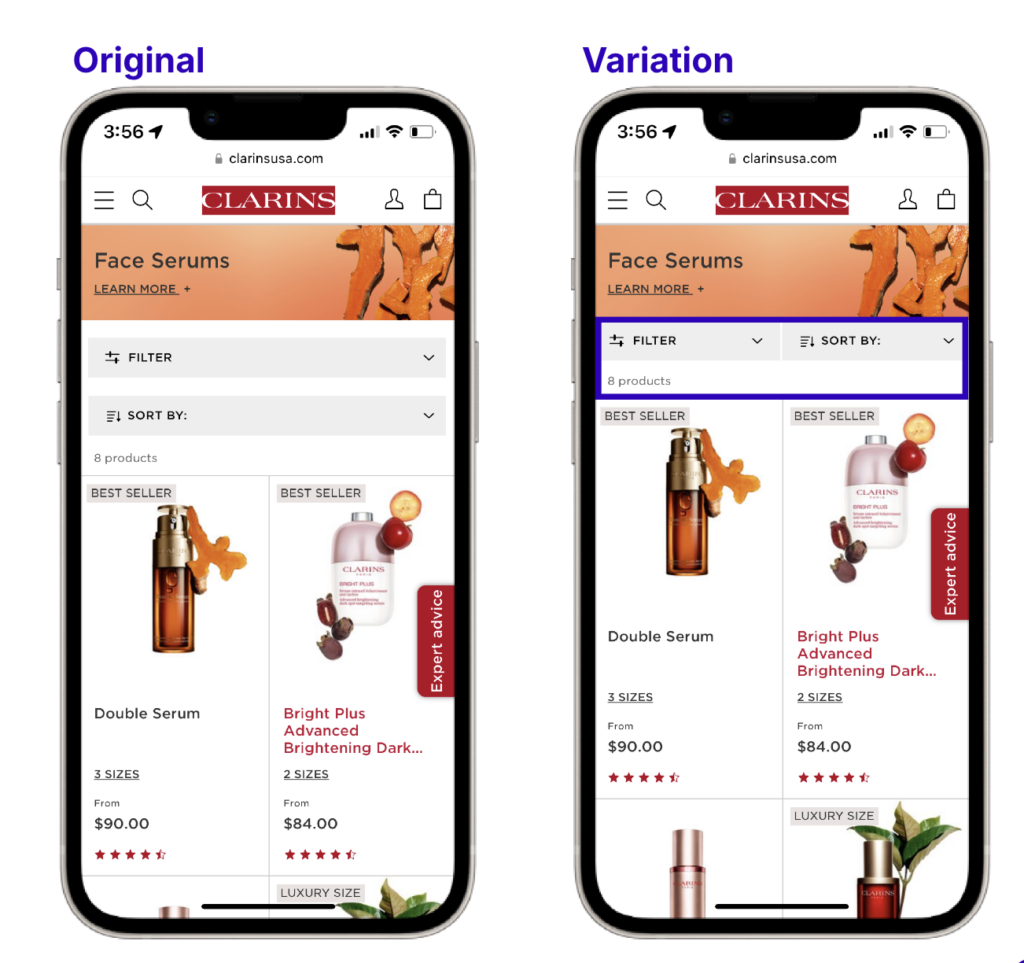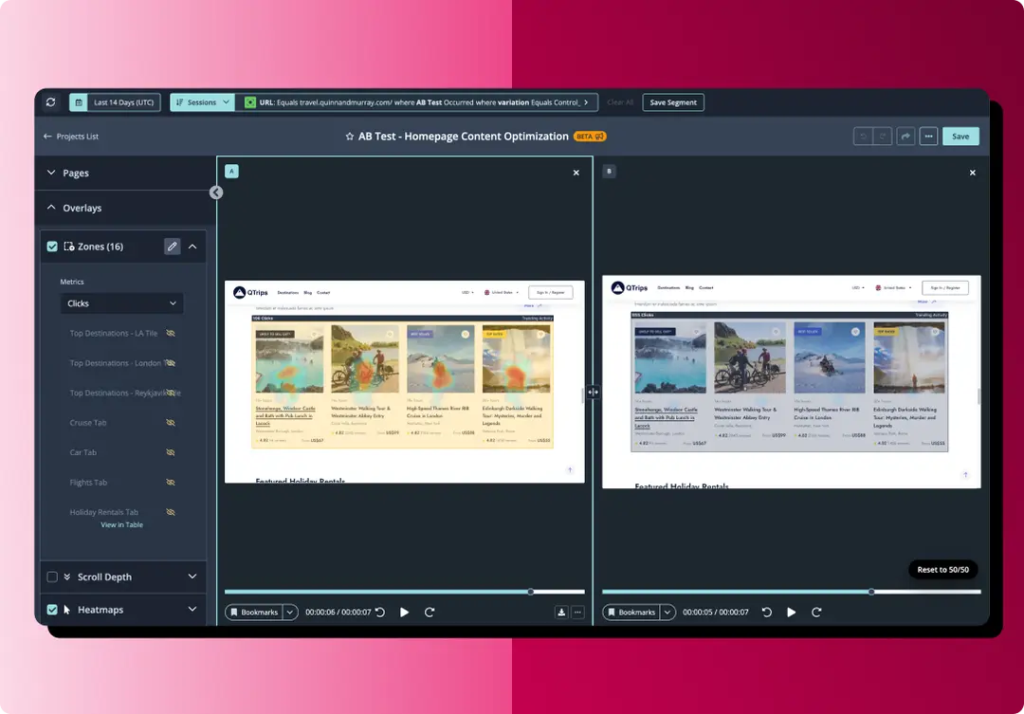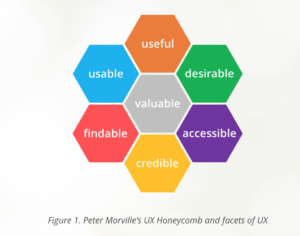Mobile commerce has revolutionized how consumers interact with brands — from browsing products on the go to researching the latest trends. Yet, despite mobile usage soaring, the full potential of mobile commerce remains untapped. While traffic from mobile devices continues to rise, conversion rates still trail behind other channels. What’s driving the gap between browsing and purchasing on mobile?
In this post, we’ll explore key mobile performance stats, delve into the challenges behind these numbers, and showcase how Quantum Metric and AB Tasty collaborate to help brands close this gap. If you want the your own mobile playbook, the insights shared here are based on data from Quantum Metric’s eBook, How Mobile Performance Builds Consumer Confidence.
1. Mobile is everywhere, but conversions lag.
Mobile traffic is not just a trend, it’s the backbone of online shopping. Consumers are increasingly using their phones for everything from discovering products to making final purchase decisions. However, despite this surge in mobile traffic, conversions still don’t match the volume of visits. So, what’s going wrong?
Insight:
- Mobile accounts for 73% of monthly traffic, but only 47% of sales.
- Travel sees the highest mobile traffic (73%), but the lowest sales share (39%).
Challenge:
Consumers love to browse on mobile — reading reviews, comparing prices, and window shopping. But when it comes time to make a purchase, they often shift to desktops or other channels. This disconnect between browsing and buying is a critical challenge.
Solution:
Quantum Metric delivers real-time insights to identify where users drop off in their mobile journeys, helping brands pinpoint key friction points. Armed with this data, AB Tasty can run A/B tests and experiments to optimize mobile conversions by improving layouts, simplifying checkout, or personalizing offers based on user behavior.

2. Personalization drives engagement (and sales).
With so much information available at their fingertips, consumers expect personalized experiences that speak to their unique preferences. But while mobile apps can deliver these tailored experiences, it’s not always the case that mobile users receive the level of customization they desire. So, how can brands keep up with the demand for hyper-personalized mobile experiences?
Insight:
- 39% of consumers prefer mobile apps, but 33% have reduced app usage.
- Conversion rates on mobile apps are 3X higher than on mobile web.
Challenge:
Consumers are increasingly expecting experiences that are customized to their preferences. Whether it’s personalized product recommendations or location-based offers, users demand content that resonates with them on a deeper level. But how do brands manage to provide this while maintaining convenience and ease of use?
Solution:
Quantum Metric provides detailed session data, revealing exactly what users are engaging with and where they’re dropping off. AB Tasty then uses this data to create personalized experiences through hyper-targeted experiments, ensuring that each user sees content that’s most relevant to them — ultimately boosting engagement and driving conversions.
3. Building confidence in mobile transactions.
Even with mobile traffic growing, many consumers are still hesitant to make purchases — especially larger ones — on their phones. Trust is a major factor in whether or not a consumer feels confident enough to complete a mobile transaction. But how can brands overcome the hurdles of security concerns and poor mobile experiences?
Insight:
- 59% of consumers only feel confident making purchases of $50 or less on mobile.
- Desktop AOVs are 70% higher than mobile for retail and nearly 2X higher for travel.
Challenge:
Security concerns and clunky mobile experiences can drive away customers before they even hit the checkout button. Many consumers feel more comfortable making purchases on desktops, where they associate higher transaction values with a more secure, familiar environment.
Solution:
Quantum Metric identifies friction points — slow load times, security concerns, or error messages — that can erode trust. AB Tasty uses A/B testing and experiments to address these pain points, creating smoother, more secure user flows that enhance trust and improve conversion rates.

4. Performance matters more than ever.
With consumers’ expectations for speed at an all-time high, mobile performance can make or break the user experience. From slow loading times to app crashes, mobile performance issues are a significant barrier to conversions. So how can brands ensure their mobile experiences are fast and seamless?
Insight:
- 59% of users have experienced slow performance; 43% have faced app crashes.
- API error rates are 2-3X higher on mobile than desktop, with issues like long spinner rates causing 48% higher friction.
Challenge:
Users have little patience for performance issues. A slow-loading page or app crash can lead to frustration and, ultimately, abandonment. The pressure to deliver fast, smooth mobile experiences is higher than ever.
Solution:
Quantum Metric’s real-time data quickly highlights performance issues, from slow page loads to API errors. Once identified, AB Tasty can experiment with various solutions, optimizing mobile performance and delivering a smoother, faster user journey.
5. Turning data into action.
In the fast-paced mobile landscape, time is of the essence. Consumers expect quick, efficient mobile experiences, and if a transaction takes too long, they won’t hesitate to abandon it. So, how can brands ensure they are responding to user behavior in real time?
Insight:
- 55% of consumers will abandon a mobile transaction if it takes longer than 3-5 minutes.
Challenge:
The pressure to scale innovation without losing sight of the customer is real. Mobile transactions need to be fast and seamless, or customers will simply walk away — especially when it comes to on-the-go transactions.
Solution:
Quantum Metric empowers brands with real-time behavioral data that shows where and when users drop off during their mobile journey. AB Tasty then helps turn this data into action by running targeted experiments that address specific friction points, reducing abandonment and improving the overall mobile experience.

Conclusion: turning mobile commerce into your competitive edge.
Mobile commerce isn’t just another sales channel — it’s a key competitive advantage. To succeed, brands must focus on delivering fast, personalized, and secure mobile experiences that build consumer trust. By combining Quantum Metric’s real-time behavioral insights with AB Tasty’s experimentation platform, brands can close the gap between browsing and buying, unlocking the true potential of mobile commerce.








